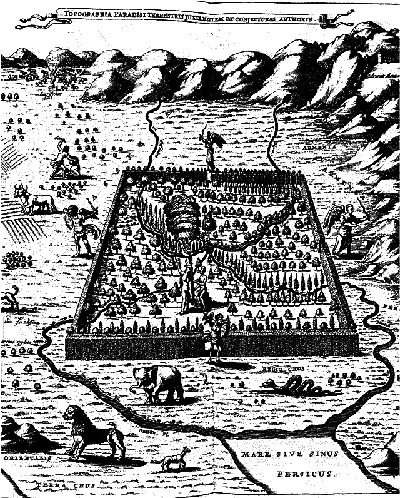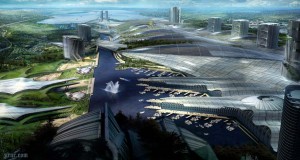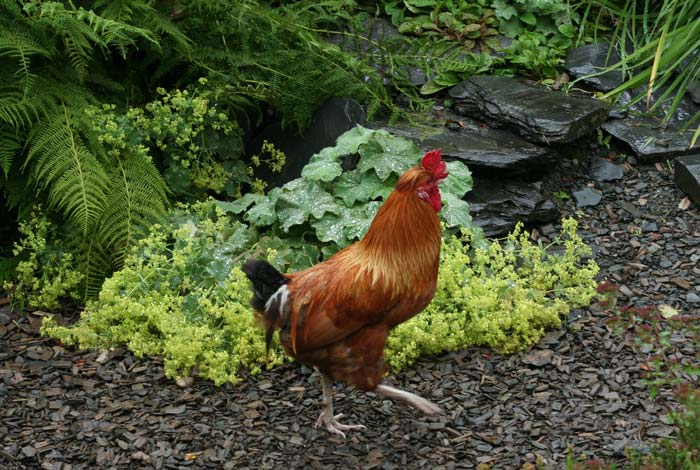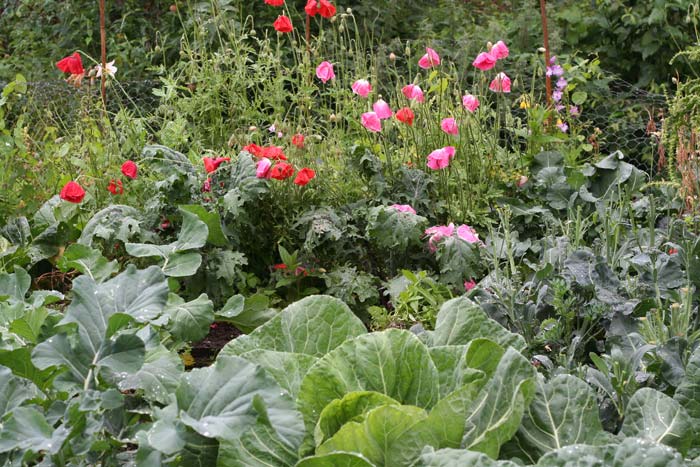Christine wonders if I am anti-architect and I thought, after a little introspection, that a public reply would be worthwhile. I would like this blog to be an interface between architecture, landscape architecture, garden design and planning – and regret it if I come over as more anti-architect than anti- the other environmental professions. I have worked with architects all my professional life, though more as a teacher than a designer, and have often found them to be more creative and more technical than many other built environment professionals. But I regard the twentieth century as a bad period in the history of urban and landscape planning – and part of the blame lies at the feet of the professions. Another, larger, part is an unwanted consequence of professional specialization. But perhaps the largest part is the fragmentary arrangements for commissioning work. River control structures, for example, are commissioned by specialized river authorities with no mandade to spend money on anything except riverworks. They might even be called up before the auditors if they ‘wasted’ money on architectural or landscape objectives. But when an abomination has been created, it is simplest and blame the designers and they do not lack culpability.
Yearly Archives: 2008
Sparking the imagination
What is the future direction of garden design?
They are muddled in some respects, including the design of a Japanese-ey Bridge, but they are surely right about three things:
- they place a great emphasis on the use of local materials. In a famous slate-quarrying region, slate is used in the CAT garden as a building material and as a paving material. This is a welcome contribution to the Great Cause of context-sensitive garden design. If gardens are made with standard ‘garden centre’ products they will not have local character
- CATare experimenting with the re-combination of food plants with beautiful plants in gardens. This is how gardens always used to be made. The idea of having separate ‘aesthetic’ and ‘vegetable’ zones in garden began with the renaissance
- CAT also have chickens at loose in the garden. They are ornamental and they lay better eggs than anything ever sold in a supermarket.
I would like to see CAT take these principles to the Chelsea Flower Show – and employ a really talented designer to explore and publicize them.
Dispersal of Landscape Institute Library and Archive
The UK Landscape Institute announced today that it has decided to sack its archivist (and four others), close the LI library archive and seek ‘a new home for the collections’. What a terrible shame. The old idea was that when you have only one loaf of bread left in the world you should sell half of it and buy a book. Or, if one is not quite so hard hit by the credit crunch, one should follow the Chinese proverb: ‘When you have only two pennies left in the world, buy a loaf of bread with one, and a lily with the other’.
One really wonders why a professional institute should employ 26 staff and yet can’t maintain a library or publish any useful policies to support its members. Whose interests are being served?
Where is this 'urban landscape'?
Los Angeles? Chicago? Beijing? Delhi? Ankara? Sydney? No: it is a view of Riyadh, in Saudi Arabia, from the Al Faisaliyah Center.
What a wasted opportunity. With so much faith, so much central power and so much wealth…. the designed urban ‘landscape’ could have been so very much better. Even now, they should commission a Strategic Urban Landscape Plan for the city – after running a multi-stage competition to select the best firm.
Although I rather admire the Saudi policy of not issuing tourist visas, it has prevented me from visiting the Kingdom to see if the landscape planning as quite as bad as it appears from this and other photographs. They could have had a landscape plan which was sensitive to:
- Islam
- Climate
- Materials
- Social Customs
- Hydrology
- Ecology
- Etc
What’s more, it would have helped create a more-sustainable landscape in preparation for when Saudi Arabia’s water and oil have been depleted. Both are ‘quarried’ on a non-renewable basis.
The Garden of Eden
 Christine’s post on the Lilypad Islands have a Garden of Eden quality. Vincent Callebaut propose a New Eden for us to inhabit when we have finished wrecking the Earth. The Lilypad Islands remind me what an excellent idea cruise ships are for other people’s holidays. Providing there is no pollution, just think how much better the all the world’s coasts would be if all the holidaymakers could be moved offshore.
Christine’s post on the Lilypad Islands have a Garden of Eden quality. Vincent Callebaut propose a New Eden for us to inhabit when we have finished wrecking the Earth. The Lilypad Islands remind me what an excellent idea cruise ships are for other people’s holidays. Providing there is no pollution, just think how much better the all the world’s coasts would be if all the holidaymakers could be moved offshore.
Athanasius Kircher’s drawing ( 1675) shows the Garden of Eden between the Tigris and Euphrates, west of the Persian/Arabian Gulf. He shows the Tree of Knowledge of Good and Evil, four angels guarding the gates and Cain killing Abel in the top-left corner. Majority opinion amongst modern commentators favours Kircher’s location of the Garden of Eden in Southern Iraq, but there are many competing theories.





